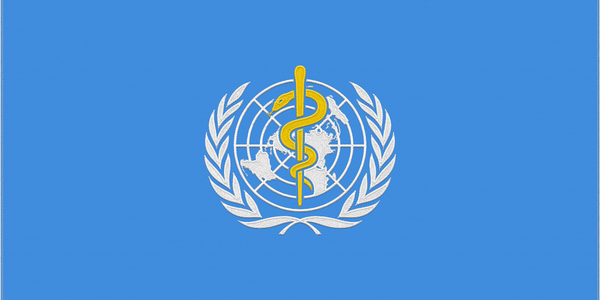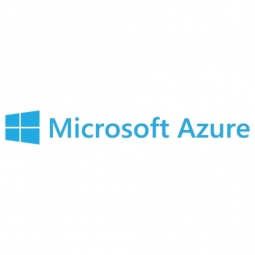下载PDF
Ground-breaking Service for Millions Uses Cloud for Online Psychotherapy

技术
- 基础设施即服务 (IaaS) - 云计算
适用行业
- 医疗保健和医院
适用功能
- 商业运营
挑战
根据世界卫生组织 (WHO) 的统计,全世界约有 17 亿人患有各种心理健康问题。这可能是从急性焦虑症和临床抑郁症到强迫症的任何事情。世界卫生组织认为,仅在埃及就有 2300 万人患有这些疾病和类似疾病。然而,阻碍人们接受治疗的因素之一是文化价值观和社会污名:他们说要么这些条件不存在,要么如果人们确实在受苦,他们只需要克服痛苦的意志力,而不是寻求专门的治疗.
估计每月有 10,000 个网站点击量,Shezlong 需要一个托管平台,该平台不仅可以为服务提供基础,还可以容纳其开源架构。
客户
社子龙
关于客户
Shezlong 是一家埃及初创公司,提供独特的创新服务:在线心理治疗,可满足数百万人的需求并消除与此类服务相关的社会污名
解决方案
软件:
- 微软天青
- 微软 BizSpark 计划
作为一家初创公司,Shezlong 有资格获得 Microsoft BizSpark 计划的业务促进支持,该计划在初始阶段以极低的成本提供 Azure 托管。 BizSpark 适用于成立时间不到 5 年、年收入低于 100 万美元的私营科技初创公司。它为 Azure 云服务提供为期 3 年的每月 150 美元的信用额度。计划参与者也有可能转移到 BizSpark Plus,它提供更多功能和一年内每月高达 5000 美元的 Azure 服务
数量效益
相关案例.

Case Study
Hospital Inventory Management
The hospital supply chain team is responsible for ensuring that the right medical supplies are readily available to clinicians when and where needed, and to do so in the most efficient manner possible. However, many of the systems and processes in use at the cancer center for supply chain management were not best suited to support these goals. Barcoding technology, a commonly used method for inventory management of medical supplies, is labor intensive, time consuming, does not provide real-time visibility into inventory levels and can be prone to error. Consequently, the lack of accurate and real-time visibility into inventory levels across multiple supply rooms in multiple hospital facilities creates additional inefficiency in the system causing over-ordering, hoarding, and wasted supplies. Other sources of waste and cost were also identified as candidates for improvement. Existing systems and processes did not provide adequate security for high-cost inventory within the hospital, which was another driver of cost. A lack of visibility into expiration dates for supplies resulted in supplies being wasted due to past expiry dates. Storage of supplies was also a key consideration given the location of the cancer center’s facilities in a dense urban setting, where space is always at a premium. In order to address the challenges outlined above, the hospital sought a solution that would provide real-time inventory information with high levels of accuracy, reduce the level of manual effort required and enable data driven decision making to ensure that the right supplies were readily available to clinicians in the right location at the right time.

Case Study
Gas Pipeline Monitoring System for Hospitals
This system integrator focuses on providing centralized gas pipeline monitoring systems for hospitals. The service they provide makes it possible for hospitals to reduce both maintenance and labor costs. Since hospitals may not have an existing network suitable for this type of system, GPRS communication provides an easy and ready-to-use solution for remote, distributed monitoring systems System Requirements - GPRS communication - Seamless connection with SCADA software - Simple, front-end control capability - Expandable I/O channels - Combine AI, DI, and DO channels

Case Study
Driving Digital Transformations for Vitro Diagnostic Medical Devices
Diagnostic devices play a vital role in helping to improve healthcare delivery. In fact, an estimated 60 percent of the world’s medical decisions are made with support from in vitrodiagnostics (IVD) solutions, such as those provided by Roche Diagnostics, an industry leader. As the demand for medical diagnostic services grows rapidly in hospitals and clinics across China, so does the market for IVD solutions. In addition, the typically high cost of these diagnostic devices means that comprehensive post-sales services are needed. Wanteed to improve three portions of thr IVD:1. Remotely monitor and manage IVD devices as fixed assets.2. Optimizing device availability with predictive maintenance.3. Recommending the best IVD solution for a customer’s needs.

Case Study
HaemoCloud Global Blood Management System
1) Deliver a connected digital product system to protect and increase the differentiated value of Haemonetics blood and plasma solutions. 2) Improve patient outcomes by increasing the efficiency of blood supply flows. 3) Navigate and satisfy a complex web of global regulatory compliance requirements. 4) Reduce costly and labor-intensive maintenance procedures.

Case Study
Harnessing real-time data to give a holistic picture of patient health
Every day, vast quantities of data are collected about patients as they pass through health service organizations—from operational data such as treatment history and medications to physiological data captured by medical devices. The insights hidden within this treasure trove of data can be used to support more personalized treatments, more accurate diagnosis and more advanced preparative care. But since the information is generated faster than most organizations can consume it, unlocking the power of this big data can be a struggle. This type of predictive approach not only improves patient care—it also helps to reduce costs, because in the healthcare industry, prevention is almost always more cost-effective than treatment. However, collecting, analyzing and presenting these data-streams in a way that clinicians can easily understand can pose a significant technical challenge.






